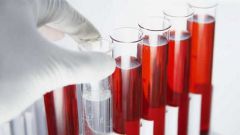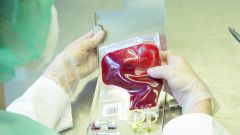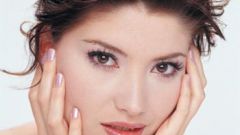Instruction
1
The most common cause paleness of the skin – anemia. If a person is constantly pale, he has a low blood pressure, fatigue and irritability, it is constantly cold, especially cold hands and feet, this may indicate the presence of iron deficiency anemia. In this disease the red blood cells a low level of haemoglobin, capillaries under the skin fill with enough blood. Often anemia is present in people interested in diets, is called insufficient iron content in food.
2
Pale skin can be in heart failure. When stenocardia ("angina pectoris", ischemic disease) is lack of blood flow to the heart muscle. Amid the pallor of the skin appear the tightness in the heart area, pain radiating to left arm, neck and even back.
Angina pain occurs on a background of well-being after physical activity (running, climbing stairs), excessive emotions (positive and negative), after a hearty dinner, when walking in cold weather. The attack lasts up to 10 minutes with rest or medication (nitroglycerin).
If, along with pallor pain not associated with physical activity, and the attack lasts more than 15 minutes, it is possible that developing a myocardial infarction.
Angina pain occurs on a background of well-being after physical activity (running, climbing stairs), excessive emotions (positive and negative), after a hearty dinner, when walking in cold weather. The attack lasts up to 10 minutes with rest or medication (nitroglycerin).
If, along with pallor pain not associated with physical activity, and the attack lasts more than 15 minutes, it is possible that developing a myocardial infarction.
3
Pallor accompanies and vegetative-vascular dystonia. Dystonia is also characterized by dizziness, fatigue, hot flashes, swings in body temperature, arrhythmia, chest pain, constantly cold hands and feet, sweating, a reaction to the change of weather etc.
4
Pale skin is a symptom of hypothyroidism (lack of thyroid hormones). Hypothyroidism may be accompanied by anaemia, and therefore there is pallor with yellowish tint. Anemia hypothyroidism occurs due to poor iron absorption in the intestine.
5
Pale skin is accompanied by tuberculosis. In the literature there is even a term "consumptive pallor". In tuberculosis there is a sharp decrease of body weight, coughing, krovoharkanye, evening rise of body temperature up to 38 degrees and strong night sweats.
6
Unusual poverty can be a symptom of blood cancer (leukemia). In addition to pallor in leukaemia appear on the skin bruises at the slightest touch, under eye blue circles, people are constantly weak, lethargic, drowsy.
7
Pallor occurs when strong fright, when in the blood of adrenaline, causing vasoconstriction. In this case there is and increased heart rate.
8
Pale look of people who lack physical activity. The heart of this people is working with less intensity, their body suffers from lack of oxygen.
9
In women pallor may occur during menstruation and pregnancy.
10
Some people have pale skin by nature. In this case, to cope with this will help cosmetics and tan.
11
Many people have pale skin with age. The skin loses moisture, starts to produce less collagen, it becomes more vulnerable to external impact.
12
The appearance of the skin and the entire body, is influenced by stress, poor environment, Smoking, consumption of alcohol.






